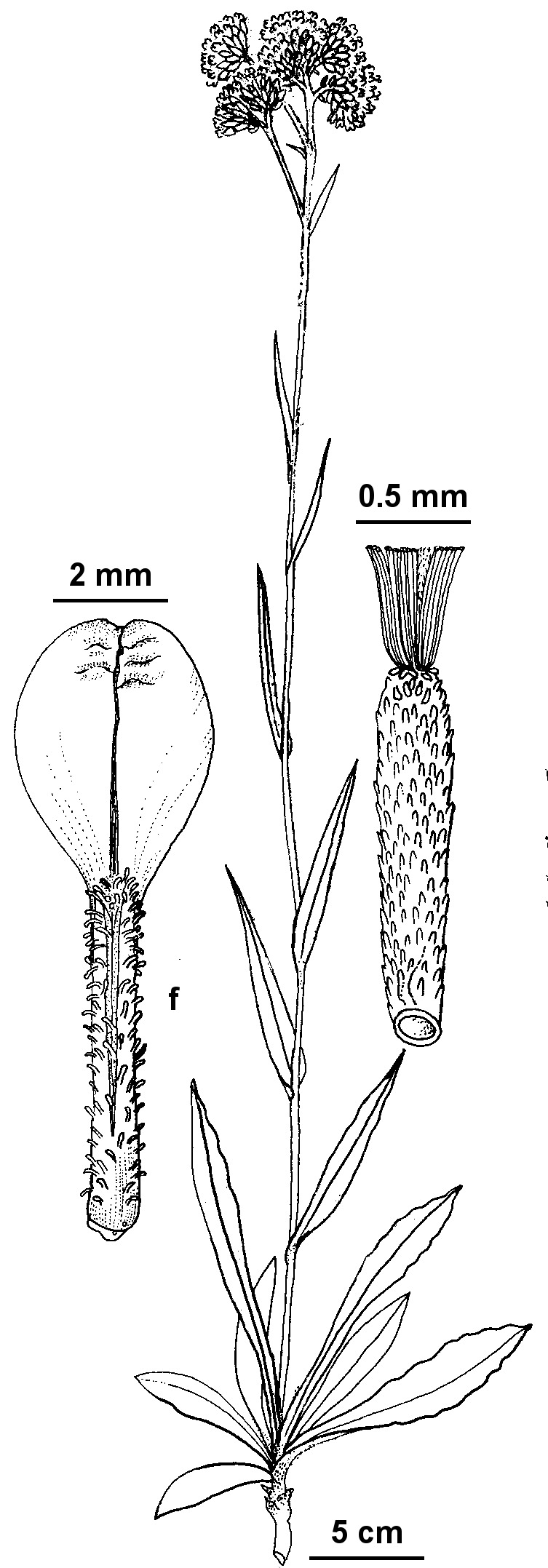Podolepis hieracioides
F.Muell. Long PodolepisErect, simple or sparingly branched herb, 20–70 cm high, renewed annually from a thickened persistent rootstock; stems woolly to glabrescent. Leaves scabrous to glabrescent, margins flat to revolute; basal leaves lanceolate to elliptic, to 20 cm long and 25 mm wide, base amplexicaul, apex acute; cauline leaves linear to narrow-lanceolate, mostly 5–13 cm long, 1–15 mm wide, sessile, stem-clasping, apex acute to acuminate. Capitula hemispherical, mostly 15–20 mm diam., 3–20 in dense cymes; peduncles 1–5 cm long; involucral bracts with linear, glandular claws; lamina ovate, scarious, virtually flat, smooth, shiny, apex obtuse; intermediate bracts 5–9 mm long, with claw longer than lamina; inner bracts long-clawed. Florets yellow; ray florets 15–30, ligules 10–18 mm long; disc florets numerous. Cypselas 2–3 mm long; pappus bristles 20–25, shortly connate at base, 6–8 mm long. Flowers Dec.–Apr.
CVU, EGU, HSF, HNF, MonT, VAlp. Also NSW, ACT. In Victoria, confined to montane and subalpine areas in the east, in open-forest, woodland or grassland.
Readily distinguished from all other species of Podolepis by the claws on the intermediate involucral bracts being longer than the laminas and the capitula in dense cymes.
Jeanes, J.A. (1999). Asteraceae. In: Walsh, N.G.; Entwisle, T.J., Flora of Victoria Vol. 4, Cornaceae to Asteraceae, pp. 652–666. Inkata Press, Melbourne.
 Spinning
Spinning
